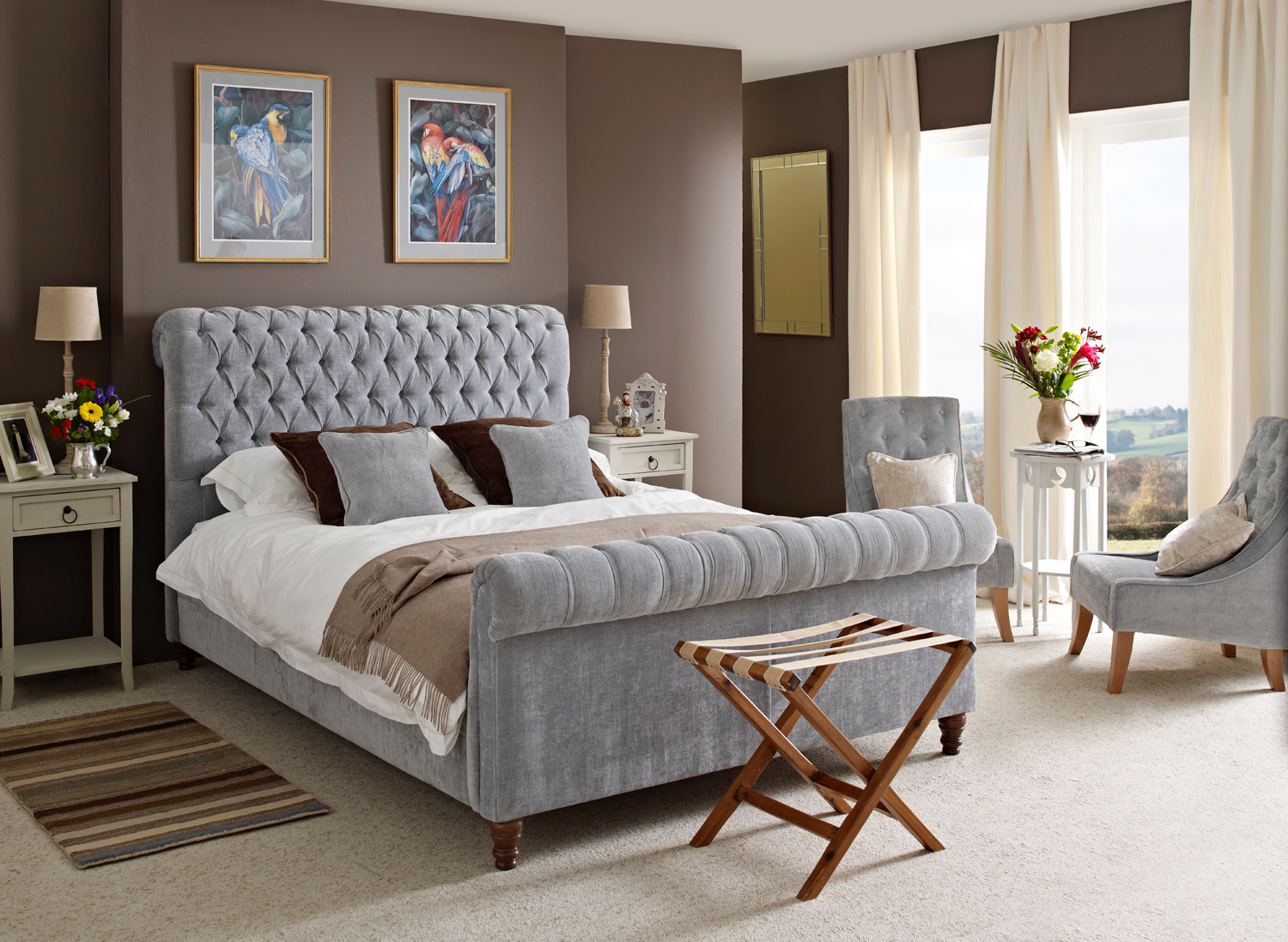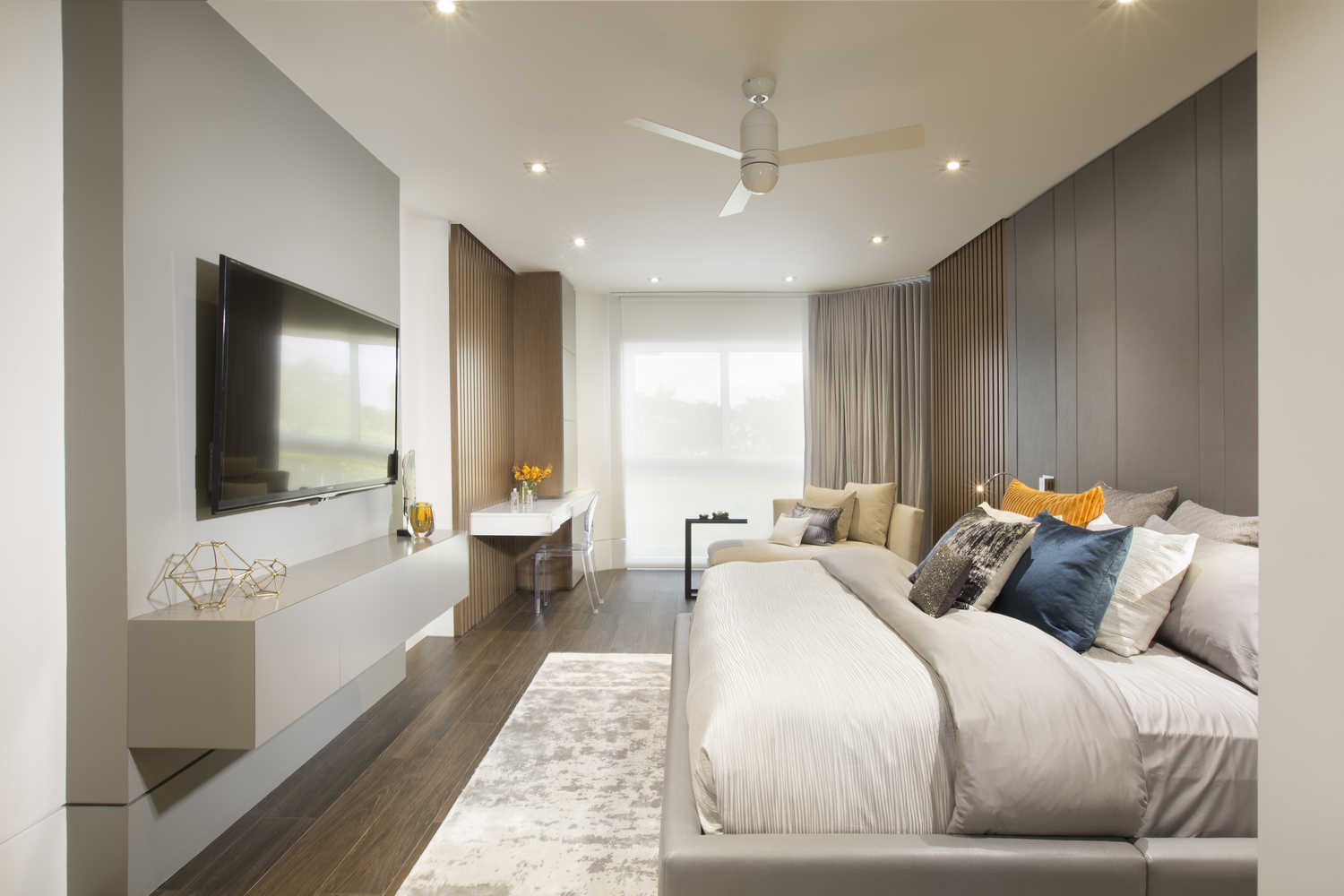Maximizing Space and Functionality with a King Bed: Master Bedroom King Bed Ideas

A king-sized bed is a luxurious addition to any master bedroom, but it can also pose a challenge when it comes to maximizing space and functionality. This is especially true in smaller bedrooms or rooms with unusual layouts. Fortunately, there are several strategies you can employ to create a comfortable and stylish space even with a large bed.
Layout Options for a King Bed
The layout of your master bedroom will significantly influence how you arrange furniture around the king bed. Here are some common layout options and considerations:
- Centering the Bed: This classic arrangement works well in square or rectangular rooms, providing ample space for nightstands and other furniture on either side. It creates a symmetrical and balanced look, emphasizing the bed as the focal point.
- Off-Center Placement: In long and narrow rooms, consider placing the bed off-center to create a more balanced proportion. This allows for more space on one side for a seating area or a large dresser, while the other side can accommodate a smaller nightstand.
- Floating the Bed: For a modern and minimalist aesthetic, consider floating the bed without a headboard. This can create a sense of openness and make the room feel larger. However, ensure the bed frame is sturdy enough to support the mattress without a headboard.
- Using a Platform Bed: Platform beds, which have a built-in base instead of a box spring, can save space and create a sleek, contemporary look. They often come with storage options, further enhancing functionality.
Incorporating Storage Solutions
Storage is a key factor in maximizing space and functionality in any bedroom, and a king bed can offer ample opportunities for built-in storage:
- Drawers in the Bed Frame: Many king-sized bed frames come with built-in drawers underneath the mattress. These drawers can store linens, clothes, or other items, keeping them organized and out of sight.
- Lift-Up Platform Beds: A lift-up platform bed features a mechanism that allows the mattress to be raised, revealing a large storage compartment underneath. This is a fantastic solution for storing bulky items like seasonal clothing, luggage, or extra bedding.
- Under-Bed Storage Boxes: If your bed frame doesn’t offer built-in storage, you can utilize under-bed storage boxes. These come in various sizes and materials, allowing you to store items discreetly without sacrificing valuable floor space.
Arranging Furniture Around the King Bed, Master bedroom king bed ideas
Once you’ve chosen a layout and considered storage options, it’s time to arrange furniture around the king bed to create a functional and stylish space:
- Nightstands: Nightstands are essential for providing a surface for lamps, books, and other personal items. Choose nightstands that are proportionate to the size of your bed and room. Consider floating nightstands to create a more airy feel.
- Dresser or Vanity: A dresser or vanity is essential for storing clothes and accessories. If space is limited, consider a narrow dresser or a vanity with a mirror that doubles as a storage solution.
- Seating Area: Create a cozy seating area with an armchair or a small sofa. This can be placed at the foot of the bed or in a corner of the room. Choose furniture that complements the bed and overall style of the bedroom.
- Rugs: A rug can define the space around the bed and add warmth and visual interest. Choose a rug that is large enough to extend beyond the bed on all sides, but not so large that it overwhelms the room.
Adding Personal Touches and Style to a King Bed Master Bedroom

Transforming your master bedroom into a sanctuary of personal style begins with defining a cohesive design theme. Whether you prefer the sleek lines of modernism, the simplicity of minimalism, the timeless elegance of classic design, or the eclectic charm of bohemian aesthetics, your chosen theme will serve as the foundation for your design decisions.
Creating a Cohesive Design Theme
The chosen theme will guide the selection of furniture, colors, patterns, textures, and accessories, ensuring a harmonious and visually appealing space.
- Modern: This style emphasizes clean lines, geometric shapes, and a minimalist approach to decor. Neutral colors like white, gray, and black are often used as a backdrop for pops of color in accents like throw pillows or artwork. Materials like metal, glass, and leather add a contemporary touch.
- Minimalist: This style focuses on simplicity and functionality, with a focus on essential pieces and a streamlined aesthetic. Neutral colors and natural textures are favored, creating a sense of calm and spaciousness.
- Classic: This style embodies timeless elegance, often featuring traditional furniture pieces, rich fabrics, and intricate details. Warm colors like cream, beige, and brown are commonly used, creating a sophisticated and inviting atmosphere.
- Bohemian: This style embraces a free-spirited and eclectic approach, incorporating global influences, vibrant colors, and a mix of textures. Natural materials like wood, rattan, and textiles are often featured, creating a relaxed and bohemian vibe.
Using Color Palettes, Patterns, and Textures
Color palettes, patterns, and textures play a crucial role in creating the desired mood and atmosphere in your master bedroom.
- Color Palettes: Choosing a color palette that complements your chosen design theme is essential. For a modern look, consider a neutral palette with pops of vibrant color. Minimalist spaces often feature a single dominant color with subtle accents. Classic bedrooms often incorporate warm, earthy tones, while bohemian styles embrace a mix of vibrant hues.
- Patterns: Patterns can add visual interest and personality to your bedroom. Modern designs may feature geometric patterns, while minimalist spaces often opt for solid colors or subtle textures. Classic bedrooms may incorporate floral patterns or damask prints, while bohemian styles embrace a mix of global patterns.
- Textures: Textures can add depth and dimension to your bedroom design. Modern bedrooms may feature smooth, sleek surfaces, while minimalist spaces often incorporate natural textures like wood or linen. Classic bedrooms may feature luxurious fabrics like velvet or silk, while bohemian styles embrace a mix of textures like woven textiles, leather, and wood.
Incorporating Personal Touches
Adding personal touches like artwork, decorative accents, and lighting fixtures can enhance the overall design of your master bedroom and make it truly your own.
- Artwork: Artwork can add a focal point to your bedroom and reflect your personal style. Modern art prints or abstract paintings can complement a modern design, while minimalist spaces may feature black and white photography or simple geometric shapes. Classic bedrooms may incorporate oil paintings or framed prints, while bohemian styles may feature ethnic textiles or colorful tapestries.
- Decorative Accents: Decorative accents can add personality and interest to your bedroom. Modern spaces may feature sculptural objects or geometric vases, while minimalist bedrooms may incorporate simple candles or plants. Classic bedrooms may feature ornate mirrors or antique clocks, while bohemian styles may feature colorful throws, cushions, or macrame hangings.
- Lighting Fixtures: Lighting fixtures can create a warm and inviting atmosphere in your bedroom. Modern bedrooms may feature sleek pendant lights or track lighting, while minimalist spaces often incorporate simple ceiling lights or bedside lamps. Classic bedrooms may feature chandeliers or sconces, while bohemian styles may feature colorful lanterns or string lights.
